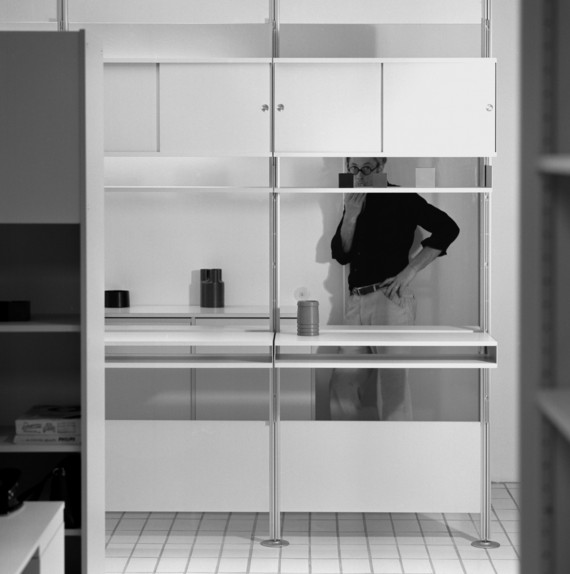»Good design is as little design as possible.«
Interview with Dieter Rams
Dieter Rams (*1932) is one of the most influential German designers of the past decades. His designs for the Braun company are legendary, his thoughts on design theory are equally relevant. On the occasion of the exhibition »German Design 1949–1989«, Vitra Design Museum Director Mateo Kries and Dieter Rams talked about the role of design in today’s society.
What was the situation you were faced with then? What did you have to build on?
Our first task, really, was to clean up, just like everyone else was doing at the time. And from this necessity came a focus on manual work and workmanship. For me perso-nally, my grandfather, who was a craftsman, also contributed to this. And this procedure, the basic principle of cleaning up, has stuck with me to this day. Today, we’re in a similar position: We need to clean up, to return to the basics.
Do you remember any specific objects or designs from the GDR that you found particularly well designed?
If you approach this question from the perspective of an industrial designer, I found a lot to like about the Trabant. That was a good construction, very durable and with some good features.
If we look at your ten principles for good design, they contain notions that could be traced back to typical German design concepts: the simplicity, the honesty, staying true to the material.
That might be the case, but I didn’t write the principles with this intention in mind. I put them on paper because Braun was changing at the time – with the increasing inter-national influence of Gillette and others – and I wanted to create a counterpoint to this development. Seeing it being taken further afield, so to speak, makes me happy of course, but I never intended for that to happen. And the stance I adopt in these principles, I wouldn’t even call it typically German, but rather rooted in a craft tradition. I have always been fascinated by the tools of craftsmen or farmers. Starting with the pitchfork, they are all excellent tools that can hardly be improved upon. This, for me, is the definition of good design.
In recent years, a younger generation has approached the idea of design with a broader scope, especially in the context of new challenges like sustainability. More people now recognize that the act of designing is always connected to a shaping of society, as well as to the environment we live in. This is comparable to what you have said about the postwar era of designers contributing to a new state and society.
We are constantly getting caught up on the term »design«, this frayed concept, when really we should be talking about a shaping of the environment. Because what does our environment, which we are busy destroying, look like? It is our fundamental life support system. This is where the main focus for designers nowadays lies. Not on us needing yet another new mug, a new radio, or whatever else.
How can we propagate this new approach?
First of all, through design education. Professional training needs to catch up in this respect. I once visited a design university in East Germany shortly after reunification – Burg Giebichenstein in Halle. I was pleasantly surprised by their training. It had a strong focus on manual skills, which are important for designers so that they can make their own models and present themselves in this way. I much preferred their way of teaching over the one in the West at the time. And I was able to draw a direct comparison between the two, because for many years I had taught at the University of Fine Arts in Hamburg, where Max Bill had also been a professor. The focus on making, on engineering that was present in the East was missing in our approach, which is why so many products have come about that cast doubt on the term »design«. It’s all unsustainable. Sustainability wasn’t a central concern in the GDR either. In general, it’s a concept that is hard to grasp: What is sustainability? And I mean sustainability also in the sense of something that is not designed to look modern, or as I once phrased it: Good design is as little design as possible.
You can find all information on the exhibition »German Design 1949–1989: Two Countries, One History« here.
